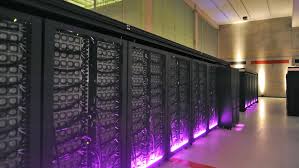In today’s digital economy, mainframes remain the heartbeat of mission-critical operations for industries like banking, healthcare, and government. They process vast amounts of sensitive data with unmatched reliability and speed. However, the strength of a mainframe lies not just in its performance—it’s in how well it’s secured.
Mainframe Security Administration is the discipline of safeguarding these powerful systems from unauthorized access, data breaches, and operational disruptions. This blog explores the best practices and strategies that every administrator should master to ensure robust protection and compliance.
The Importance of Mainframe Security Administration
Mainframes handle some of the most confidential data in the world—think customer banking details, patient medical records, and government files. A breach can result in devastating financial losses, reputational damage, and regulatory penalties.
Security administration on a mainframe involves:
Access Control – Defining who can do what, and ensuring users only have the permissions they need.
Data Protection – Encrypting data both in transit and at rest.
System Monitoring – Detecting unusual activities or potential breaches early.
Compliance Management – Meeting industry standards like PCI DSS, HIPAA, and GDPR.
Best Practices for Mainframe Security Administration
1. Implement Strong Access Controls
Use security managers like RACF, ACF2, or Top Secret to control and monitor user access. Apply the principle of least privilege—grant only the access necessary for each role. Regularly review and revoke unused accounts to reduce the attack surface.
2. Enforce Multi-Factor Authentication (MFA)
Passwords alone aren’t enough. MFA adds an extra layer of security, combining something you know (password), something you have (security token), and something you are (biometrics).
3. Encrypt Everything
Ensure data is encrypted both at rest and in transit. Use z/OS encryption capabilities and integrate with hardware encryption modules to protect sensitive information from interception.
4. Monitor System Activity Continuously
Implement SMF (System Management Facility) and real-time monitoring tools to log and review user activities. Suspicious activities—like repeated failed login attempts—should trigger automated alerts.
5. Regular Security Audits
Schedule periodic security audits to verify compliance with internal policies and external regulations. Automated audit reports can highlight configuration weaknesses and help you take corrective action quickly
Strategies to Strengthen Security Administration
1. Adopt a Zero Trust Approach
In Zero Trust security, no user or device is trusted by default—even if they are inside the network. Every access request is verified, authenticated, and authorized before being granted.
2. Integrate Security into DevOps (DevSecOps)
As mainframes become more integrated into hybrid IT environments, security should be embedded into every stage of the software development lifecycle. Automate security scans for code deployed to mainframe environments.
3. Automate Security Tasks
Manual processes are prone to error. Use REXX scripts, JCL automation, and policy-based controls to enforce security standards consistently. Automation reduces oversight gaps and speeds up incident response.
4. Train and Educate Staff
Security is only as strong as the people who manage it. Provide continuous training for administrators, developers, and operators on emerging threats, new tools, and compliance requirements.
5. Plan for Incident Response
Have a documented and tested incident response plan that outlines what to do in case of a breach. Include clear roles, communication protocols, and recovery steps.
Real-World Example: Strengthening Mainframe Security
A large financial institution we worked with faced recurring unauthorized access attempts on its mainframe. By implementing MFA, tightening RACF rules, and automating security log reviews, the company reduced security incidents by over 70% in six months. This proactive approach not only boosted security but also improved audit readiness.
The Role of Continuous Improvement
Cybersecurity threats evolve rapidly, and so must your security administration practices. Continuously review logs, update policies, and adapt to new compliance regulations. Staying proactive is key to maintaining the trust of your customers and partners.
Conclusion
Mastering mainframe security administration requires a balance of robust technical controls, proactive monitoring, and disciplined governance. By enforcing strict access controls, embracing encryption, automating security processes, and training your team, you can protect your most valuable digital assets.
In the world of enterprise IT, the mainframe remains a fortress—but only if its defenses are continually maintained and enhanced. By adopting these best practices and strategies, you ensure that your mainframe is not just powerful, but also secure, compliant, and future-ready.



